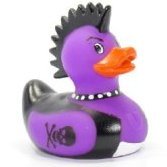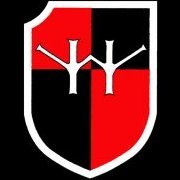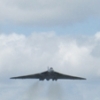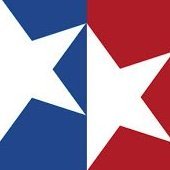Search the Community
Showing results for tags 'revell'.
-
This is the older Revell kit, the PAH.2, which came out in the very early 90's, not to be confused with the new mold Revell kit, which has very nice Tiger Meet decals in it and has a lot more surface and cockpit detail. However I decided as I got this for free, I might as well build it for what it is. Fit is generally pretty good, as mentioned detail is lacking somewhat, you do get decals for the instrument panel and seat belts but the decals in my kit were wrecked. Thus I sourced some from another helo kit so they are not 100% accurate. It makes into a decent shelf sitter, although I'll probably take it to a model show or two as a table filler. If you do want to build a very early Tiger then this is your kit. It's not a bad model, just basic. Thanks for looking.
- 3 replies
-
- 14
-

-
- revell
- helicopter
-
(and 1 more)
Tagged with:
-
My apologies for being late on parade chaps, I have been wrapping up a build for the Century Fighters GB (finished yesterday). My first entry for the GB is this Revell Airbus A319 which will be finished in British Airways centenary markings when sporting BEA's Red Square retro scheme. Here are the box and contents photos along with the 26Decals sheet. by John L, on Flickr by John L, on Flickr by John L, on Flickr by John L, on Flickr by John L, on Flickr Time to get on with it now. Cheers. John
-
Salutations! I am pleased to present my freshly completed He-177 A-5 as flown by Kampfgeschwader 40 on anti-shipping missions over the Atlantic. It carries the Ruhrstahl FX 1400 "Fritz X" radio guided bomb. I think it's a handsome design with gangly landing gear that makes it resemble more of a wasp than a gryphon, as its nickname implies! This was a kit that I wanted to build for a few years, but I didn't feel that my skills were up to the task until recently. As expected, the build wasn't all smooth sailing - not a single clear part fit correctly, leading to some creative work with my hobby knife around the cockpit glazing, and very careful gluing. It is entirely brush painted. The decals were thick and this led to some silvering, but I'm not too bothered by that. I did the best that I could. I was inspired to continue working on my kit by the excellent result that @Roman Schilhart achieved with his model a couple months ago, so thank you!
- 19 replies
-
- 78
-

-
One of my latest models from 2019/2020. was a lot of fun to build, because there is nothing complicated. The only thing I did that I riveted the model. weathering and painting in the most usual methods we mostly know. sometimes it’s good to pick a model from the stash that you want to build 20 years ago !!! have fun….. Cheers Andy
-
Hi all and here's my first for this year, Grumman's model 303E which would become the F-14 Tomcat. Built for the Prototypes, Racers, Research, Record breakers, Special schemes megaGB here on the forum. The short build thread is here but to recap: Kit: Revell 1/72 F-14D converted Paints: Tamiya and Mr Hobby Acrylics Decals: Caracal for 'F-14 Tomcat, the Early Years' Mods: Earlier seats; modified wing gloves and fences with plasticard; earlier TF-30 engine nozzles; extended 'boat' tail; nose pitot from stretched sprue; removed lumps and bumps The #1 prototype made its short maiden flight on December 21st 1970 with Grumman chief test pilot Robert Smythe in the front and project test pilot William Miller in the back. On 30 December, on the aircraft's second flight, the aircraft was lost due to failure of a hydraulic pump which caused a total loss of flight controls. The crew ejected safely and the aircraft crashed short of the runway at Grumman's Calverton plant, New York. Revell_1_72_Grumman_F-14_prototype_build (10) by Dermot Moriarty, on Flickr Revell_1_72_Grumman_F-14_prototype_build (15) by Dermot Moriarty, on Flickr Revell_1_72_Grumman_F-14_prototype_build (16) by Dermot Moriarty, on Flickr Revell_1_72_Grumman_F-14_prototype_build (5) by Dermot Moriarty, on Flickr Revell_1_72_Grumman_F-14_prototype_build (19) by Dermot Moriarty, on Flickr Revell_1_72_Grumman_F-14_prototype_build (6) by Dermot Moriarty, on Flickr Thanks for looking, take care and happy modelling. Cheers, Dermot
-
With one Luft ’46 project out of the way, I fancied digging another one out of my extensive pile of them on Tuesday night. My chosen victim was this: Not a massive amount on the sprues, but nicely moulded. The clear parts are also nice & clear, but I may give them a dip before they make it onto the model even so: Decals aren’t looking bad considering they’re 25 years old: I managed to get a lot of parts off the sprues quite quickly. And even glued the halves of the wing sections (all three of them!) together: And a load of parts mounted ready for painintg: And the rudder pedals glued on. I’ve actually installed these upside down to the instructions, because they just looked wrong the “correct” way up: As that was the end of Tuesday’s work, I’m going to break the post here and do another for yesterday’s work. James
-
my latest finished model of the ship "Batavia" from Revell, I used pulleys from Shipmodel - 340 pcs in total, I made the sails, sewed them at home, the rest is classic, oil paints, Tamiya paints, Tamiya pigments and figures. The model represents her last voyage, the ship did not reach its destination and crashed on the "Horning reef".
-
Hi folks, I have been lurking around these forums for quite some time now and very much enjoyed it, especially the work in progress and ready for inspection sections. I finally summoned my courage to present some of my own models to the community hoping to receive some honest feedback which will ideally permit me to improve my skills or to question my techniques. This is the recently released Fw190F-8 by Revell, built OOB. Just some minor adaptations like drilled out guns, braking wires and antenna cable (stretched sprue). I use a mixture of Mr Hobby and AK acrylic colours. Although the FW190 is a very popular model, I hope that this will be of some interest to you. The built was hassle free and quite some fun. As mentioned - any constructive criticism most appreciated. Thanks for watching!
- 18 replies
-
- 38
-

-
Hi folk's this is my build for this GB. There's a little warpage on the upper body part but sorted and the door's now fit perfectly.Three tone NATO paints bought ready for later.
-
Hello Everyone, I'd like to join with a Revell Sea Hurricane IIc. 1/72 Built OOB. (I hope...) It's been 6 months since I touched a kit, so this would be good for me to get back into the groove.
-
Hello all. I present you my last build 1/72 king tiger from revell. I liked the kit. The build was flawless. No need for extra efford. The paint scheme was choosen to be ambush camouflage used in the battle of the bulge. All painting process was completed with brushes only. The weathering was completed with oils and acrylics. All comments will be welcomed. Happy modelling
- 12 replies
-
- 28
-

-

-
- Revell
- King Tiger
-
(and 1 more)
Tagged with:
-
Well now, I've been desperate to get started on my Miniart Panzer III Ausf B for weeks, so I'm really pleased to finally be starting this little Opel Kadett car. I don't know what happened either! I think @Phil1960 and his Citroen are to blame, alongside my fear of tackling any of the 'full interior' tank kits that I can't resist buying. So my first 'full interior' will be a few seats, a steering wheel, and a few pedals. It looks to be a fun little thing to build, let's hope I get to step 20 - glueing the roof on and sealing up the interior - without too much anguish It doesn't look very sporty. 129 parts according to the box. Some of it looks very fragile, and lots of potential crookedness if the panels don't go together well. There's a nice little engine that I might need to show off. The front axle looks too narrow on this picture. We shall see! I hate rubber tyres, so I've got these. They're meant for an ICM kit but I'm hoping that they fit OK.
- 11 replies
-
- 9
-

-

Carrera Revell Porsche 917KH Le Mans Winner 1970 (07709) 1:24
Mike posted a topic in Vehicle Reviews
Porsche 917KH Le Mans Winner 1970 (07709) 1:24 Carrera Revell The origin of the 917 begins with the 908 race car, which was developed at the end of the 60s to take part in the Group 6 Prototype championship that had been developed by the predecessor to the FIA, who had included easement to increase participation, allowing larger engined cars to race, which Porsche took full advantage of. The 917 ran a type 912 engine, which was a flat-12 created by mating two flat-6 engines from their stable, with power transferred by a four or five gear transmission. They used clever techniques to save weight, including advanced metals such as titanium, and doubling the use of some of the tubular framework to also carry fluids around the car’s chassis. The rest of the frame was permanently pressurised to help detect fatigue or damage cracks by measuring a drop in pressure inside the frame, and the child in me kind of hopes that they used Helium to save even more weight and make the driver’s voice squeaky after a crash! The area taken up by the engine pushed the driver’s feet past the front of the chassis, and the rear was covered by a long sweeping cowling that was initially longer, and could actually generate lift at particularly high speeds. The shortening and aerodynamic improvement of the cowling resulted in the K variant that stands for Kurzheck, which translates in modern terminology to “hatchback”. This variant had much more efficient aerodynamics and downforce that allowed it to corner faster than the earlier marks, although those were still used for particularly fast, relatively straight tracks where downforce wasn’t so crucial, and where the conditions allowed, the 908 was still used on occasion. Although 1969 wasn’t a resounding success, 1970 became an exceptional year for Porsche, and as the engine had been successively bored out to 5L, it was producing over 600bhp by then, so was winning more often than not, the 917K winning 7 out of the 8 races it was entered in thanks to its power, handling and of course the driver’s skill from within the cockpit. The reputation of the Porsche brand had been boosted massively thanks to these successes, and were considered by most to be the world leaders in this genre of motorsport, which they were more than happy about. Winning the 1970 Le Mans race made their smiles even broader than usual, and again in 1971, although they didn’t have it all their own way in ’71, as the competition had woken up and were making inroads into Porsche’s dominance. Later in the 70s the 917 went to America to compete there, and again in the early 80s, a change in regulations allowed it to race again in some events, the last being at Brands Hatch in the UK, where it retired with suspension failure bringing its surprisingly powerful performance to an end. The Kit This is a colourful reboxing of the Fujimi kit in a Revell box, adding some swooping white “eyelash” decals that emanate from around the headlights, depicting the attractive scheme worn by the 1970 Le Mans winning vehicle. The kit arrives in a medium-thickness end-opening box with a handsome painting of the subject on the front, and a banner that marks it out as a Limited Edition in red and gold. I guess the take-away there is that if you want one, get it soon before they run out of stock. It’s likely to be popular too, so I’d take them at their word. Inside the box is a large outer bag, with all the sprues inside also separately bagged, probably because they were delivered like that from the factory. There are two sprues of white styrene, two more in black, a small chromed sprue, a clear sprue, a H-shaped sprue with the four black, flexible tyres on each corner, a small translucent sprue of polycaps, the instruction booklet with colour printing and the profiles in the rear, which holds the safety sheet and the decal sheet inside. It’s all very nice and cleanly moulded, belying its 2003 origin, with no flash or mould damage evident, which is always good. The wheels are first to be built, making them in pairs due to the difference in size and width between front and back. The black hubs slide inside the tyres and are put aside while the brake discs and hubs are constructed, hiding a peg axle inside, with a polycap slid over the end of each one after closing up the assemblies, leaving the pegs unglued to allow the wheels to rotate. The front suspension is moulded into a section of the inner floor, and has a fire extinguisher and a ladder-like part layered inside along with some substantial detail painting, which as usual is flagged with letter codes that correspond with a table near the front of the booklet. The rest of the floor pan is prepared by removing some stiffening sprue sections and painting it up before lowering the front section into position inside, and adding the sides, coil-over shock absorbers, then control arms and the combined hub/disc assembly, and more anti-roll bars and the steering arm. Under the nose is an intake that consists of two parts that slide into two notches in the front of the floorpan. The reason the front suspension is made first is because the poor driver basically sits over it, so his dashboard is built next under a deep coaming, with the instruments, steering column and wheel plus a supporting framework stretching forward into the nose, and locating on a pair of holes in the base. The driver’s larger seat with decal belts is placed on the right on cross-members, with a small co-driver/vestigial seat on the left. A full engine isn’t in the purview of this kit, but you do get a representation of the upper section that is built up with the rear suspension, transmission and structural elements that are inserted behind the firewall bulkhead that separates it from the cockpit. The rear discs and drive-shafts are installed either side of the transmission, then the relevant metal framework is placed over the power pack in three layers, the uppermost layer also mounting the exhaust trunking and what looks like a spare rim, although it has different spokes than the others, and can’t be, surely? Over the engine is the air intake pathway that consists of three parts, plus a pin in the underside that allows the impeller in the middle to rotate. After the last of the supports are installed, the rear wheel arch liners are added to the framing, and the four wheels are pushed onto the polycaps without glue, taking care to put the bigger, wider tyres on the back end. The bodyshell is moulded in white, which should make painting it red easy enough if you’re not a fan of primer, and it is split into forward and rear sections at the back of the crew compartment. The forward section has a lower rolled-under fairing fixed under the nose, and an inspection panel over the driver’s feet, with the overhead crescent-shaped window optionally painted red to block out the sun. The rear half has two NACA vents added on the fairing behind the cockpit, and a slim bulkhead at the very rear, which has two holes drilled in each side to accept the simple rear light clusters, which are painted before application. Some little chrome intakes and a fuel cap are fitted into position, then the detailing of the forward half is detailed by adding chrome lamps with clear lenses in the headlamp cut-outs that have been painted black previously, and another pair inset into another recess, covering them with lozenge-shaped lenses later on. The windscreen and grille are added from the outside, and the rear-view mirror is glued into the roof from inside, with a few more chrome intakes added on the door surfaces. The twin windscreen wipers are mounted on a single arm that fixes to small holes on the scuttle, and the two door windows are fixed in place with a red rim around each one. The two halves are brought together, then another cap is pushed into its hole from below, with a small cut-off lever at the front left on the scuttle. The body and floorpan are clipped or glued together starting at the nose, and locating on a number of pegs that slip into holes in the underside. Markings As this is a special edition, there is only one decal option on the sheet, which is the vehicle that won the 1970 Le Mans race. It is painted bright red, with white stripes extending from the headlamps, and running around the side. The rims are black, which gives it a striking appearance from every angle. From the box you can build the following: Decals are by Zanchetti, which is a guarantee of good registration, sharpness and colour density, with a thin gloss carrier film cut close to the printed areas. The eyelashes are linked together by the carrier film, so you shouldn’t have too much trouble with narrow stripes folding up on each other, which should be quite a relief. Conclusion This is a really nice kit of an attractive design by Porsche, in an eye-catching livery that won perhaps one of the best-known races in motorsport. Highly recommended. Carrera Revell model kits are available from all good toy and model retailers. For further information visit or -
Hello fellow modelmakers! I've recently started a new project: the 214 Class submarine, from Revell in 1/144. This is the boxart: The build is straighforward, and in few steps you have an idea of the size... The model, isn't precisely small. I love it. I did a first test of the periscopes, snorkel, etc. displayed at the top of the sail: Revell offers the choice of displaying all of them, (...seven in total), or show all closed. If you chose the first option, the observation hatch also remains open. Below, both pieces. But I think submarines never display all this instruments alltogether at same time. So, I decided to show only: the snorkel, one antenna (instead of two possibles), the radar, and two periscopes (instead of three). And also, the observation hatch closed. Then, I did a mix between both pieces, in order to get my goal. Below the result. Alon all the model, there are several gaps to fill in. For this, I use Tamiya Putty, after masking with tape: After sanding the putty, I put the rest of small pieces (bollards, pennants, etc...), and the model was ready for a first coat of primer: This, is after the airbrushing the primer: And this, is after a first layer of paint. The colour has not yet been decided, It might be darker. I hope you like it. See you soon, and thanks for watching!
- 1 reply
-
- 11
-

-
- 214 Class
- submarine 1/144
-
(and 1 more)
Tagged with:
-
Just got these tiny wee things from Messrs. Kingkit for a bit of Christmas fun.
-
My first Spitfire in 1:32. The kit was nicely detailed, but suffered from fit issues mainly on the wingroots. I first attempted to place a spreader, but after adding the cockpit I noticed it widened the fuselage enough to make the roots meet the wings. Decals were the best part of the kit, they conformed to the panel lines without the need for Micro Sol. I did use it to make the lower roundels conform to the many bumps of the lower wing. Here are the photos. Hope you guys had a nice Christmas!
-
After building (but not getting bored of) lots of Bf 109s and Fw 190s, I decided to pick this 1:32 Spitfire Mk.IIa from Revell. I read about its inaccuracies, but they don't detract the fact that the aircraft will, most likely, look like a Spitfire. I'm aiming for a start past December 6 of this year.
-
Hello all! I'm pleased to present my latest effort, the Revell 1/72 SR-71. The Blackbird is an awesome machine and I'm really pleased to have this one on the shelf, it's just such a cool looking aircraft. The kit is fairly simple, there aren't many parts, though I picked the Revell version because it came with a nicely detailed cockpit and pilots, even though you can't really see them! I made the kit without any extra scratch building, though sanded off the panel lines and rescribed the whole thing. It also needed a thorough filling and sanding job on the seams on the underside. I used an airbrush for most of the painting with a matt black preshade followed by very dark greys - Tamiya rubber black and nato black. The decals were interesting! They go down really well and didn't have any trouble with silvering but the instructions are all over the place - basically ignore the numbering - and a few are reversed; bonus points if you can spot these! Finally she was weathered with a thinned oil paint light grey panel line wash and some ground-up pastel pigment dry brushed on. It still needs a stand to finish off but thought I'd get the RFI up anyway, I'll add an extra photo when I finally get around to it. Thanks to everyone who had the patience to follow along (things did not move quickly on this build!) and who provided comments and encouragement along the way, the WIP is here: Anyway, enough from me, enjoy the snaps!
-
I’ve been a BM member for about a year now and this is my first WIP. I feel slightly apprehensive about this because: (a) I’m a comparative novice. having only just come back to the hobby last year after an absence of half a century; (b) I’m assembling a kit under the critical gaze of fellow Britmodellers many of whom are extraordinarily talented and experienced and; (c) carrying out the conversion is going to be complex. I bought the Revell Victor before the Airfix one came out as it was the only one available, and I wanted it to accompany the Airfix Vulcan which was my ‘first’ build last year (and blimey that was challenging). I've since added a couple of the new Airfix Victors to my modest stash, but they're B2 and K2 variants, so I decided to convert the Revell one into a B1 as I think it's the most 'pure' in shape and form. I have no idea how long this will take but I hope I’m up to the task. Please do give advice, point out errors and comment generally! So, here goes: I started with the cockpit. The Flightpath set contains some nice photo-etch for the instrument panel but as there is nothing for the rear crew’s panel I thought I’d make one. It’s not based on reality but I’m fairly pleased with the way it turned out, even if it is a touch over-scale. I made a mistake on the crews’ seats. I’ve seen the Airfix model features swivel seats but the Revell one doesn’t, so I decided to add interest into the rear of the cockpit by showing them turned. I then discovered that this wasn’t a feature on the early Victors because the seats were fixed. But having cut and glued them in place I decided to leave them as they were. My initial plan was to include the three crew members, so I decided not to paint the seat pads, just the backs and sides. I also made a table for the rear crew. Crikey, the camera doesn’t lie does it. They look terrible... I’ve dry-fitted the cockpit into the fuselage halves to see how it fits, and how much is likely to be visible. No-one is ever going to see anything of the crew other than the pilot and co pilot... At this point I thought I’d dry fit the resin intakes to see how they fit. They’re really very nice and hopefully won’t need too much filler (at least on the top). The underside is going to need a bit of filler though... They don’t seem to quite fill the slots in the fuselage on either side... Having done that I set about chopping the kit’s wings. Gulp. Not having done this before, I measured once, twice and three times before cutting but they didn’t fit the resin particularly well (and I didn’t take a photo). So I cut again, but this time along the wrong panel line and with a dry fit look as though they will go together quite nicely. I'm hoping no-one will notice that they're roughly 1.5mm shorter than they should be!.. I’m puzzled by the shallowness of the rear jet exhaust ends though. They have very little depth, so I’ve decided to deepen them a bit. I’m scared stiff of wrecking the resin parts so I’ve been really careful, and held the drill bits in my fingers and turned by hand.It’s going to be a slow job. This is where I am with that so far... As a diversion from drilling resin I thought I’d take a look at the wing assemblies and slice some carrots. What bothered me was glueing the sections together so that they all joined at the correct angle. So I enlisted the help of a couple of flexible steel rules to act like spllnts... That seemed to work. I’ve also added the metal wingtips... At this point I thought I’d attend to the pilot and co pilot. I have no idea why I’ve turned both their heads slightly towards port, but I have. I’ve added some very simple detailing with strips of masking tape to their seats, and added the photo-etched pull handles... They’re now sitting in the cockpit. Incidentally the blunt nose pitot thngy was broken in the box. I'll be replacing it eventually... And so far she looks like this. Still dry-fitted apart from the cockpit and the plastic parts of the wings. I've filled the joints with plasticard and a touch of filler. There's still an awful long way to go. I might have it finished by Christmas 2019 ! All comments welcome.
- 212 replies
-
- 29
-

-
Hi everyone, This build has been a long, long, time coming but what better time to start it than after a first COVID vaccination! To cut a long story short, over the years I've often seen the helicopters of the Midlands Air Ambulance charity flying over- whether it's coming into the QE Hospital in Birmingham, flying over our home now and again, returning to Cosford, or even while out and about. They do remarkable work and it's only right that I have a go at modelling such a fantastic machine. My previous foray into a 1:72 G-OMAA can be found here, but this time I will have to make my own decals and have a much better go at the interior. Here's the base kit: Colour scheme-wise, there are a few variations when it comes to decals. Although the 2 photos (from Cosford 2019) shown below would be good to use, I also have other reference material with the "Babcock" logo replaced by the "Bond" logo- it's a minor point, but I think the white lettering makes for a slightly more aesthetically interesting model. As you can see from the above, there are a lot of decals to try and replicate. Let's get cracking! All the best, Sam
- 56 replies
-
- 12
-

-
German Submarine Type XXI (05177) 1:144 Carrera Revell The Type XXI U-Boat was an advanced ocean-going submarine that mercifully for the Allies, arrived too late to see meaningful service in World War II. It featured several important innovations including a super-streamlined hull, a snorkel for the diesel engines that allowed it to run submerged for extended periods, and a huge battery capacity that endowed it with unprecedented underwater speed and endurance. Facilities for the crew were also much improved over the previous generation of boats, with individual showers and freezers for storing food amongst the home comforts available, setting the standards for post-war submarines once the war was over. One example of the type, U2540 was launched in early 1945 but never actually made it as far as a combat patrol due to fuel shortages. Instead, she was scuttled in May 1945, only a few months after her launch. Some 12 years later, U2540 was salvaged and returned to service with the Bundesmarine as the Wilhelm Bauer. Following retirement from service in 1982, she was put on display as a museum ship at Bremerhaven, where she remains to this day. The Kit This is a reboxing of the 1990s era kit of the Willhelm Bauer, but with the cut-away option removed, leaving it with a much shorter parts list and possibly wider appeal, as not everyone wants to spend the time building the interior of a kit. It arrives in a long end-opening box, and within are just two large sprues in grey styrene, a small sheet of decals, folded-up old-skool Revell instruction booklet printed on rough paper in black and white, and obligatory safety sheet. Regardless of its era, the exterior detail is crisp and consists of both engraved and raised details, and there is little in the way of flash to be seen anywhere, which bodes well for the completed model. Construction begins with the dive planes, which are assembled on a platform that uses two rods and a cam to allow the planes to move in synchronisation once installed in the slots on the sides of the hull. Two more slots at the bow are filled with inserts to represent the torpedo tube recesses, and at the rear the aft planes that mount the screws are each made from two halves, a tip with deep sink-marks in both sides, and the propulsion screw, slotted into the respective side of the hull before closure, which is next. The two halves are brought together, trapping the central rudder at the rear, and the two deck plates between the tops of the hull, then adding the steering vanes behind the outboard screws, slipping their axles into the holes in the hull. A four-part base is included on the sprue, and that’s of use now because otherwise your model will roll all over your workbench. Even if you plan on putting a more attractive base on your model later, this may be useful whilst building the model. The conning tower, or sail if you prefer is the next to be built, starting with an insert added to an opening in the port half, then bringing the two halves together, and inserting the two turreted guns in the holes fore and aft of the tower, securing them with styrene washers that you glue to the peg on which they rotate. The 20mm anti-aircraft guns are separate from the turrets, so can be left to pivot if you so wish. The base for the forest of masts in the centre of the sail also has the three crew recesses moulded-in, and a plate that glues under it to provide a base. There are a total of four tubular masts with various equipment at the top, two of which are joined together near the tip, and these are joined by a pair of short whip aerials, square and circular aerials, after which the sail is glued onto its location near the centre of the boat. The final step is likely to be carried out after main painting, and includes a quantity of scratch-style work. You are advised to make up thirty-eight vertical railings of 7mm in length and 0.5mm diameter from stretched sprue, although I’d be making mine from wire for strength. Then you are shown how to link them together in two overlapping runs with thread or wire, plus another two aerials that are strung between the ends of the deck and the sail, as per the accompanying diagrams. Markings There is only one set of diagrams for the main hull printed in greyscale, but there are five decal options for the modeller to choose from, all with a pair of scrap diagrams for the sides of the sail, which is where they differed for the most part. From the box you can build one of the following: U3504 Commissioned 23rd September 1944, scuttled 5th May 1945, Wilhelmshaven U2502 Commissioned 19th July 1944, sunk 1st January 1946 in Operation Deadlight U2514 Commissioned 19th October 1944, sunk 88th April 1945 at Hamburg by bombs U2540 Commissioned 19th October 1944, scuttled 4th May 1945 near the Flensburg lightship U3501 Commissioned 19th October 1944, scuttled 4th May 1945 at Wesermünde Decals are by Zanchetti, which is a guarantee of good registration, sharpness, and colour density, with a thin matt carrier film cut close to the printed areas. You should note that the decal for the Kriegsmarine flag is printed without the swastika in the centre. Each decal option has a plaque at the centre of the decal sheet, tailored for application to the supplied stand. Conclusion This is an interesting update of a nice model. At just over 53cm (21”) long, it’s an impressive size, and time has been kind to the moulds, so the build should be straight forward. Highly recommended. Carrera Revell model kits are available from all good toy and model retailers. For further information visit or
-
Those who have followed my recent builds will know of my affinity with the 747. Whilst my current 747-436 tribute build is stalled (I'm still waiting for replacement decals), I thought I would turn my attention to some more modern 747 kits. Hopefully they will be far less hassle and go together much more easily than the venerable Revell 747-400! The only modern version of the 747 is the -800 variant. Both Revell and Zvezda have 1/144 versions of this aircraft, but which is best? There's only one way to find out - build them both! To start, here are the two boxes: First impressions - the packaging on the Revell box is superior, as are the decals. The quality of the sprues looks pretty comparable - time will tell as the build progresses... More on that later! Regarding the schemes, I am going to venture into the world of custom decals and build these two as 'what ifs'. Both models will be finished in a 'Utopia' or 'World Image' livery, used by British Airways at the turn of the century and then dropped in favour of the current 'Union Flag' scheme. It was a bit marmite(!), but I quite liked it and thought it would be an interesting side project to design something completely different and previously unseen on a 747. One model will be finished in the 'Youm al-Suq' design, representing Saudi Arabia. This scheme was only ever used on two aircraft - an Embraer 145 (G-EMBJ) and a 737 (G-GBTA). Images of these two aircraft can be seen on the artist's website: https://www.shadiaalem.com/british-airways-utopia-project I purchased some decals designed for the 737 and set to work on photoshop, amending the design to fit a 747. Here's the original decal: Then after many, many hours of work, I created something 747 sized: The other airframe will receive a variation of the 'Colum' livery used on my tribute build. This design was quite well received and there were several different versions of this design in use. I am basing my decal on G-BGDR, a 737-236. I bought these decals earlier in the week and have a few hours of work ahead of me... Here's how they look, compared with the 747: Obviously they need enlarging and I will have to make a few modifications and additions along the way! I hope to turn my attention to these two models soon - I need a break from the endless round of filling/sanding/priming which seems to be happening with all my other projects at the moment! Just gluing plastic together will make a pleasant change...😀
- 108 replies
-
- 14
-

-
- Custom Decals
- Revell
-
(and 1 more)
Tagged with:
-
Hello guys! I'm pleased to show you my first Allied Pacific Theatre Corsair. I've been wanting to make one for a long time, but I needed the correct paints. After much searching, I came across Vallejo's Model Color line. The Vallejo paints were Dark Sea Blue and Intermediate Blue. The White and varnishes were from the Revell Aqua line. This kit was originally released in the 70s, and remained the only F4U-1A in 1:32 until the arrival of Tamiya's kit in 2013 (Birdcage), which spanned a nice family of big scale Corsairs. Here are the photos. Next time you'll hear from me will (hopefully) be with an Spitfire in 1:32.
- 5 replies
-
- 22
-

-
- F4U-1 Corsair
- Revell
-
(and 1 more)
Tagged with:
-
This Corsair came with me from the LHS last week. I also bought two Vallejo Model Color bottles (Dark Sea Blue and Intermediate Blue) so I can paint the aircraft as accurately as possible. Both paints were tested on a paint mule, and found out the paint applied over unprimed areas tended to lift if masked. That's why I'll be priming the entire model (something I don't usually do) in light grey, so I can then lay down the camouflage colours. The kit is of the raised panel line style, unsurprising since this model was released in the 1970s. It's been reboxed multiple times until 2013, the printing date of the kit's decals. There aren't a lot of parts, and some of them have a bit of flash, but nothing a sharp scalpel can't solve. I'm aiming to start on this one after December 22 of this year (hopefully). Edit: Startes the kit yesterday. I just couldn't resist.
- 26 replies
-
- 9
-

-
This 1/72 Revell F-89D/J Scorpion was entered in the FB NordicPower Group Build. F-89D FV-237 belonged to the 57th FG "Black Knights" stationed at Keflavik, Iceland 1962 Thanks for watching! Cheers, Luka










-0.thumb.jpeg.27419bf01c40cfb2c3a2133bd1110726.jpeg)
_opt.thumb.jpg.be9c1e22e34c329b51268dfacc8614e0.jpg)





